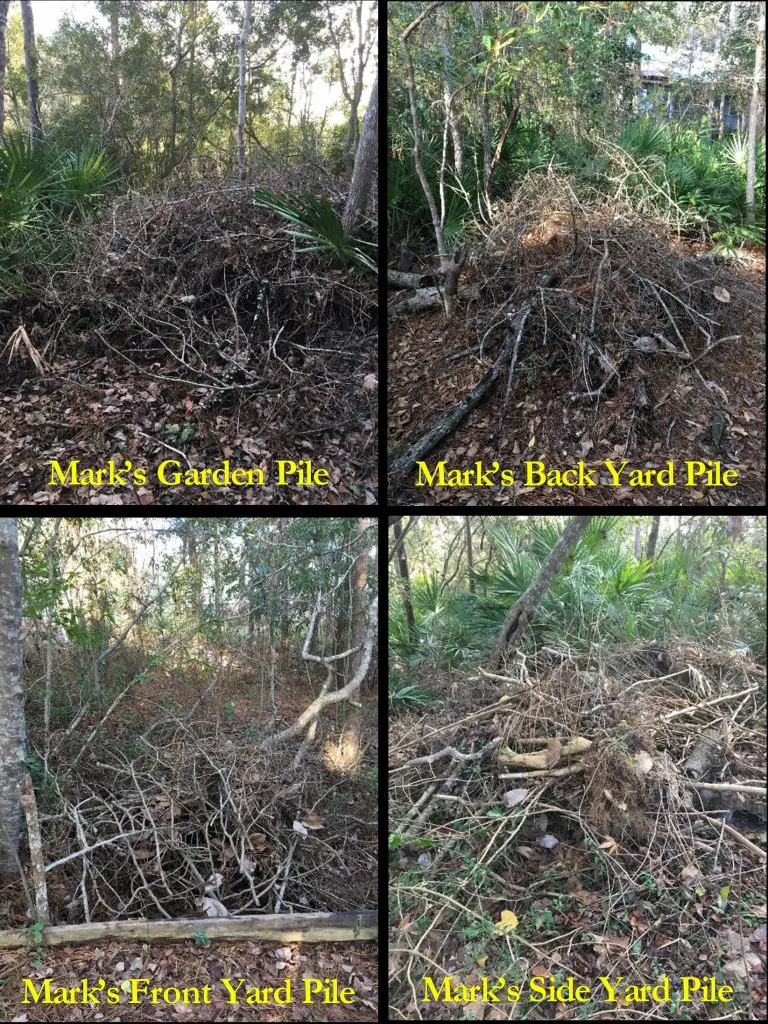Need a place to put all those branches and leaves that you just collected across your yard? Build a brush pile and create a home for wildlife. But let me deal upfront with the inevitable grief that I will get from those of you that fear brush piles. They do certainly attract snakes, lizards and, oh yes, mice and rats. I am quite familiar with these arguments against the practice of recycling the branches and leaves from your yard, rather than burn them or put them on the roadside for pickup … and I appreciate those of you that just cannot go there. For those of you that are less offended by the creatures that call these structures home, let me share a bit about what these piles mean as habitat for wildlife and as a means of recycling.
Ask any wildlife expert and the answer is the same … many creatures are attracted to the food, shelter and refuge that a pile of branches can provide: big or small. Bush piles attract insects and other small invertebrates that play a part in decomposition of the accumulated organic matter over time. For many small reptiles and birds, these are important sources of food. For snakes and turtles, piles provide a safe place to burrow into or under. Many small birds will use the relative shelter of the upper, and more open, sections of piles to get out of the wind at night, especially in winter. Small mammals like mice and rats are also attracted to piles, as are rabbits and skunks.
The latter creature played a role in one of my best memories of my Mama. As a young boy of 7 or 8, Mama brought my sisters and me to a local park for a picnic. As usual, I wondered off to check out the creatures under any thing I could find and of course in the one brush pile that I encountered. I invited Mama to join me and everything was just peachy …until she spotted the skunk, deep within. Who knew that Mama could run that fast? I don’t recall my feet hitting the ground, as she of course did not leave me behind. From that modest beginning, I became an unapologetic ambassador for brush piles, because even the skunks deserve a good home. I often say that I have a Ph.D. in brush pile making, including the six in my wooded acre alone, not to mention the many that I have built or inspired at local parks, natural areas, and Boy Scout camps.

The attached images are from my yard and I share them as any proud “parent” would share pictures of their offspring. Each of these have been in place for over 20 years and cycle through size every year or so when I add fallen or trimmed branches and leaves during my bouts of “woods” clearing. Within weeks and months, the piles shrink, recycling nutrients into the soil. And that is the recycling part of this story … as I keep these piles of natural debris out of the landfill. Oh, and there is no magic way to build a pile. Just start stacking and enjoy making a home for wildlife.
[penci_blockquote style=”style-1″ align=”none” author=””]Hope to see you all in our great outdoors!!![/penci_blockquote]